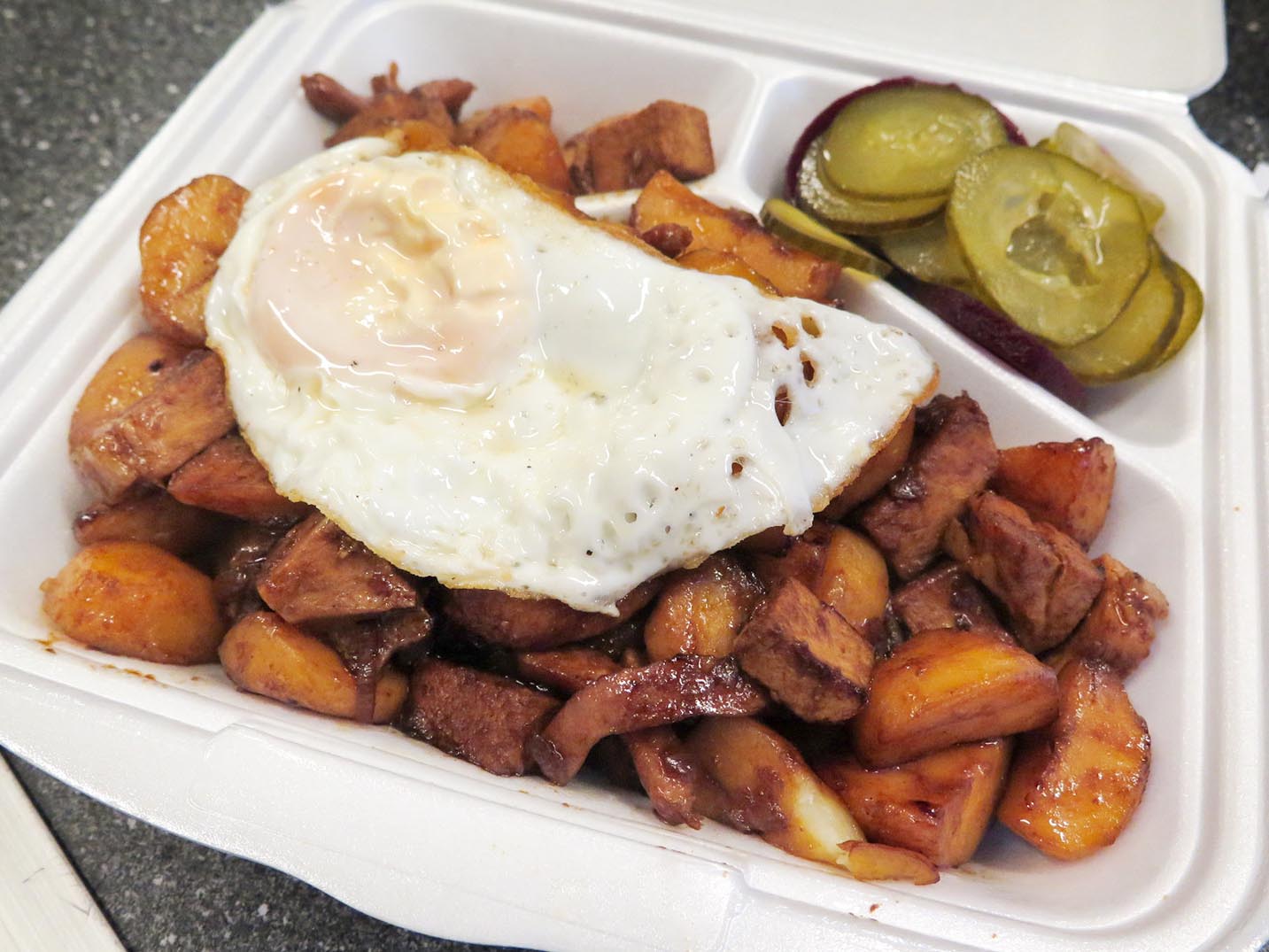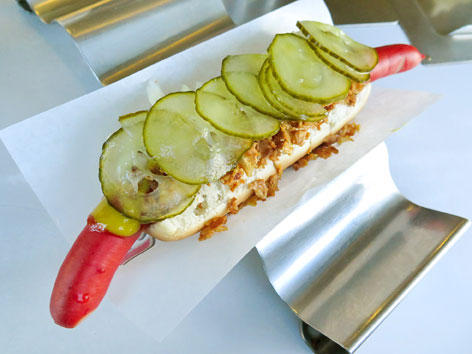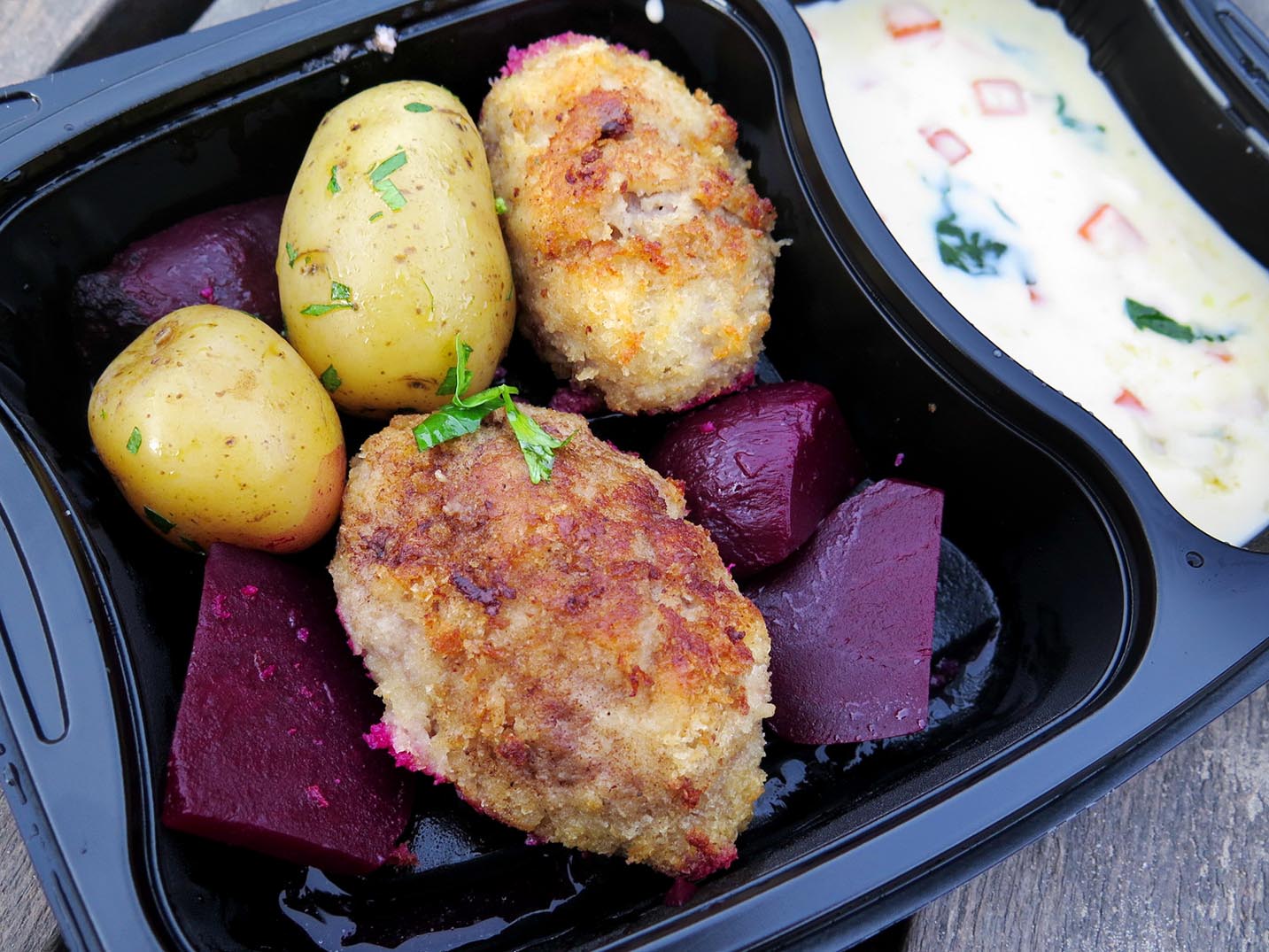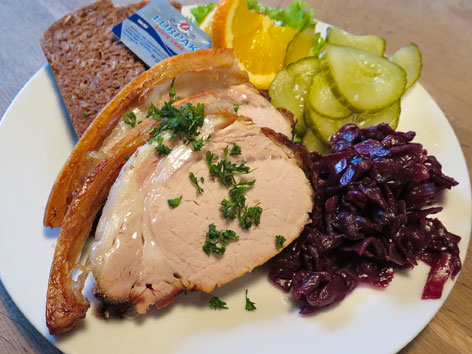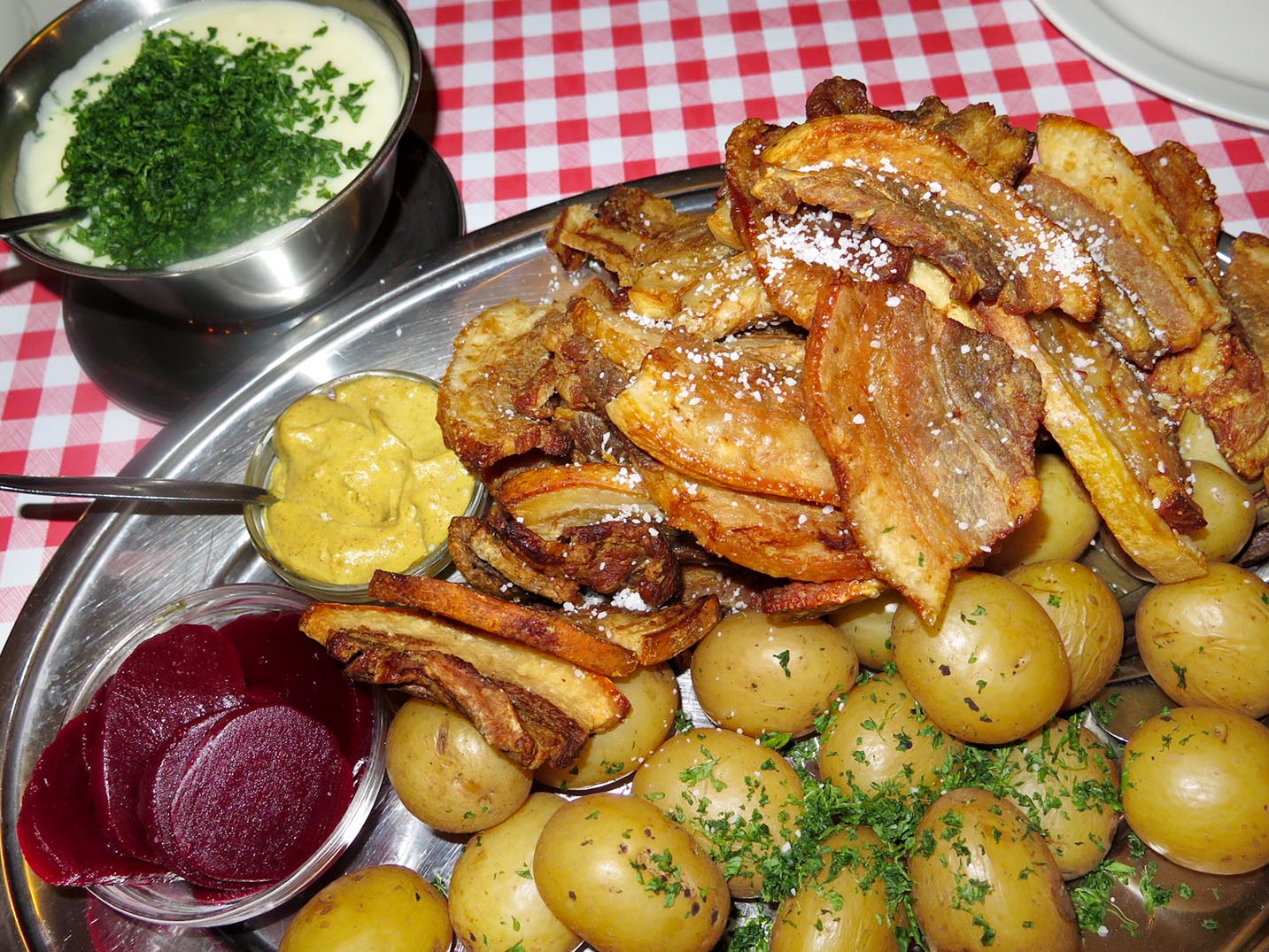The definitive Danish lunch, smørrebrød (roughly, “smer-buhd”) are open-faced sandwiches. It is here in Copenhagen where the dish’s popularity grew, and where they come in hundreds of varieties, artfully composed combinations of proteins (meat, seafood, eggs), vegetables, spreads, and garnishes carefully placed atop a thin slice of buttered rugbrød, Denmark’s beloved dark, dense rye bread. Although Danes have been eating rye bread for some 1,000 years, smørrebrød probably dates to the 1840s, when farm laborers and other workers got in the habit of packing lunches with a slice of rye and various toppings like cold cuts, fish, cheese, leverpostej (liver paste), or another homemade spread. Forty years later, more gourmet takes of this lunch began appearing on restaurant menus, starting with Restaurant Nimb’s in Tivoli Gardens, in 1883—a tradition that continues today at Fru Nimb, Tivoli’s new smørrebrød restaurant.
Most of the varieties you’ll encounter today don’t actually resemble “sandwiches” at all, but rather lavish arrangements of food that happen to be atop a hidden slice of bread. You order smørrebrød by the piece; anywhere from three to six pieces should fill you up, depending on their size and your appetite.
While you can often customize your own plate, smørrebrød tend to be presented in classic combos. Of the most popular and traditional, just a few of the ones to know include: leverpostej (pork-liver spread with bacon and mushrooms; see entry), kartoffelmad (boiled potato with mayo and chives), dyrlægens natmad (“veterinarian’s midnight snack,” leverpostej with saltkød (corned beef), meat aspic, and onions), fiskefilet (pan-fried fish with remoulade and lettuce), fiskefrikadeller (fish cakes, with lemon and tartar sauce), Grønlandske rejer (Greenlandic shrimp with mayo and dill), and æg med rejer (or rejemad, small shrimp with hard-boiled egg and mayo).
Then there's frikadeller (Danish meatballs, usually with red cabbage and/or pickles; see entry), stjerneskud (“shooting star,” fried fish, smoked salmon or steamed fish, shrimp, and caviar with mayo and lemon), røget ål med lun røræg (smoked eel with scrambled eggs), skagen sild (pickled herring in a creamy white sauce), roastbeef med sprøde løg (roast beef with crispy onions, remoulade, and horseradish), tatar (beef tartar with raw egg yolk, horseradish, and onion), pariserbøf (pan-fried “tartar”—essentially a burger—with horseradish, onions, capers, pickled veggies, and raw egg yolk), and various other combos that feature smoked salmon or halibut, boiled ham, chicken salad, roast pork, veal tongue, cheese, and more.
A whole world of smørrebrød is out there, and there’s no better place to dive in than in Copenhagen.
Where: Most of the traditional Danish lunch restaurants, many detailed below as alternates and featured elsewhere on the site, are formal sit-down, old-school places that specialize in smørrebrød, herring, and snaps—and they’re not cheap. So it’s refreshing to also visit a spot like Rita’s Smørrebrød (Fælledvej 11, map) in Nørrebro, a tiny budget-friendly café popular among locals. We have Alex at Virtual Wayfarer to thank for pointing us there.
Good to know: While there are a few small tables inside and on the sidewalk, Rita’s is largely a takeaway spot—bring your loot back to your place or bring it to a nearby park, like Hans Tavsens Park.
When: Mon-Fri, 7am-2pm
Order: Rita’s has more than 50 types of smørrebrød on offer, and invites you to make your own if you wish—but you’ll have a hard time straying from the classic combos. The four pictured, a mere 12 kr each, are (clockwise from top left) kartoffel ristede løg (sliced yellow potato with lettuce, mayo, and crispy fried onions, garnished with cress), æg med rejer (sliced hard-boiled egg with mayo and shrimp, garnished with red pepper and cress), fiskefilet (fried flatfish filet with lettuce and remoulade, garnished with lemon, red pepper, and cress), and dyrlægens natmad (liver pate with corned beef, aspic, and lettuce, garnished with raw onion, red pepper, and cress). Underneath each composition was a single piece of thin but sturdy rye bread. Did they taste good? We admit a few of the combos take some getting used to—and we’re personally not fans of mayonnaise in general—but we did enjoy these, particularly the fish and the potato varieties. See below for some more smørrebrød standouts.
Alternatively: We’re big fans of the overwhelming lunch-only menu at Restaurant Schønnemann (Hauser Plads 16, map), an iconic basement eatery established in 1877 that’s famous for its smørrebrød and snaps (most lunch plates range between 70-168 kr, although they are of course more elaborate than those at Rita’s). We especially loved the incredible smoked eel and scrambled egg dish there.
Another favorite “sandwich” is the classic leverpostej we devoured at Ida Davidsen (Store Kongensgade 70, map), likewise a century-plus-old eatery famous for its smørrebrød, of which there are some 250 imaginative varieties here. Over by the botanical gardens, Aamanns (Øster Farimagsgade 10-12, map), both a deli/takeaway and a (newer) sit-down restaurant (Aamanns Etablissement), gets a whole lotta love for its signature, more contemporary smørrebrød, offered as a much smaller menu Monday through Sunday—if you visit the deli, there are plenty of picnicking opportunities in that area. Told Og Snaps (Toldbodgade 2, map) and Restaurant Kronberg (Brolæggerstræde 12, map) are two more we recommend in a long line of traditional Danish-lunch eateries.


